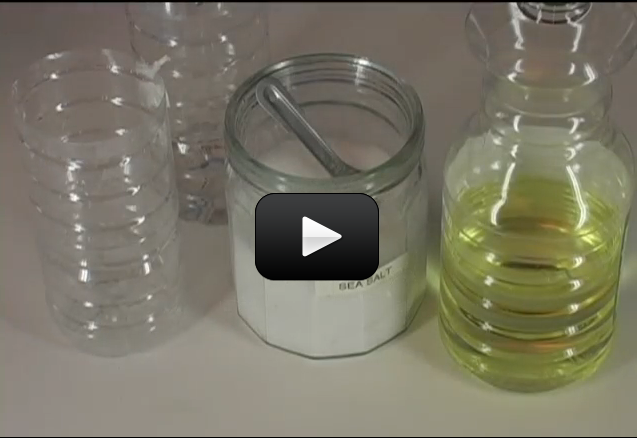We're going to watch how density works by making a simple lava lamp that doesn't need electricity! If you like to watch blob-type shapes shift and ooze around, then this is something you're going to want to experiment with. but don't feel that you have to use the materials mentioned below - feel free to experiment with other liquids you have around the house, and be sure to let me know what you've found in the comment section below.
All you need is about 10 minutes and a few quick items you already have around the house. Are you ready?
[am4show have='p8;p9;p11;p38;p92;p13;p40;p68;p79;' guest_error='Guest error message' user_error='User error message' ]
Here's what you need to find:
Download Student Worksheet
What's happening? You're actually watching the salt itself fall through the oil. However, the oil sticks to the salt to form a larger object, and since the salt is heavier than oil and water, the whole mess plunks to the bottom of the glass. At the bottom of your cup, the oil breaks free of the salt (eventually) and rises back up. Does it matter if you heat the oil, chill the water, or vice versa? Is there anything that works better than salt?
Going Further: Unscrew the camp and add a broken-up effervescent tablet (like alka-seltzer) to your bottle. Cap it and watch what happens! Did it react with water, oil or both? What if you turn off the lights and shine a flashlight through it?
[/am4show]
- empty glass jar with straight sides (if possible)
- vegetable oil
- salt
- water
- food dye


when you put in a whole spoonful of salt at once the oil makes a giant bubble!
i used olive oil [we don’t have vegetable oil] and it was so cool!
The density of Olive oil and vegetable oils are very similar however, they contain different kinds of fats. These chemical differences affect salts ability to “carry” some of the oil to the bottom.
We tried it with olive oil. The olive oil did form a layer above the water, but the salt didn’t seem to “catch” it, so there were no lava lamp bubbles. When we used regular vegetable oil, it worked as expected. Did the olive oil not work because of a different density, weight, slipperiness, or something else?
Sure, you can add more than one color.
Yes, the lava lamp can be moved, but it is best to keep it in one place so there is no risk of spilling. Oil is difficult to clean off of floors, and food coloring can stain.
Can you use more than one color of food coloring?
Can the lava lamp be moved?
Thank You!
Do you mean, food dye, like food coloring? Yes, you’ll find it will mix with some things but not others!
Can we use food diy?
Yes absolutely!
Can we use corn oil for this?